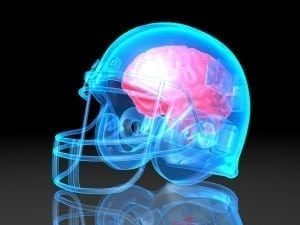Concussions and Athletes
September 18, 2015Team Elite
Concussions have become a regular event in sports. It seems like every day you read about an athlete that suffers a concussion and has to be held out from practice and competition, so what exactly is a concussion?
Concussion comes from the Latin word “concutere” which means to shake violently. A concussion is the most common type of traumatic brain injury. There is no exact medical definition for concussion as different physicians have varying opinions on what constitutes a concussion. It is clear however that the varying opinions agree that a concession leads to neurological impairment. It is also agreed that there are varying grades of concussion severity and I have added the table below.

Concussion Symptoms
The loss of consciousness following a blow to the head is the best symptom that a concussion has occurred. If there is no loss of consciousness then the following symptoms might indicate a concussion:
- Worsening Headaches
- Repeated Vomiting
- Dizziness
- Excessive Drowsiness
- Blurred Vision
- Slurred Speech
Treatment
- Physical Rest: It is recommended that the patient doesn’t participate in physical activity until all symptoms have been resolved.
- Cognitive Rest: It is recommended that the patient reduce activities which require concentration. These activities include video games, schoolwork and text messaging.
- Rest in a Dark area: it is recommended that the patient rest in a dark area to further speed up the recovery process. Light is a stimulus, which sends information to the brain that the brain has to process.
Rehab for Athletes After Being Symptom Free
The 2008 Zurich Consensus statement on concussion in sports recommends the athlete progressing through the following steps before a return to competition.
- Complete physical and cognitive rest: The athlete is to rest and not conduct any physical activity until they are symptom free for 24 hours.
- Light aerobic activity (less than 70% of maximum heart rate).
- Sport-specific activities such as running drills and skating drills.
- Non-contact training drills (exercise, coordination, and cognitive load).
- Full Contact practice.
- Return to competition.
How to Reduce Concussions in Athletes
- Studies have shown that strengthening neck muscles helps reduce the risk of concussions. The following exercises can help strengthen your neck:
- Exercise #1. Neck Flexion (Neck Flexors)
- Exercise #2. Neck Extension (Neck Extensors)
- Exercise #3. Lateral Neck Flexion (Right and Left)
In Summarization
- Get a lot of rest.
- Avoid activities that require concentration.
- Don’t train until symptoms have been completely resolved.
- Slowly ease your way back into training , don’t jump right in.
- Be careful , once you sustain a concussion, you are more at risk of suffering another one.
Sign up here to start your free subscription to MidlandsLife!














